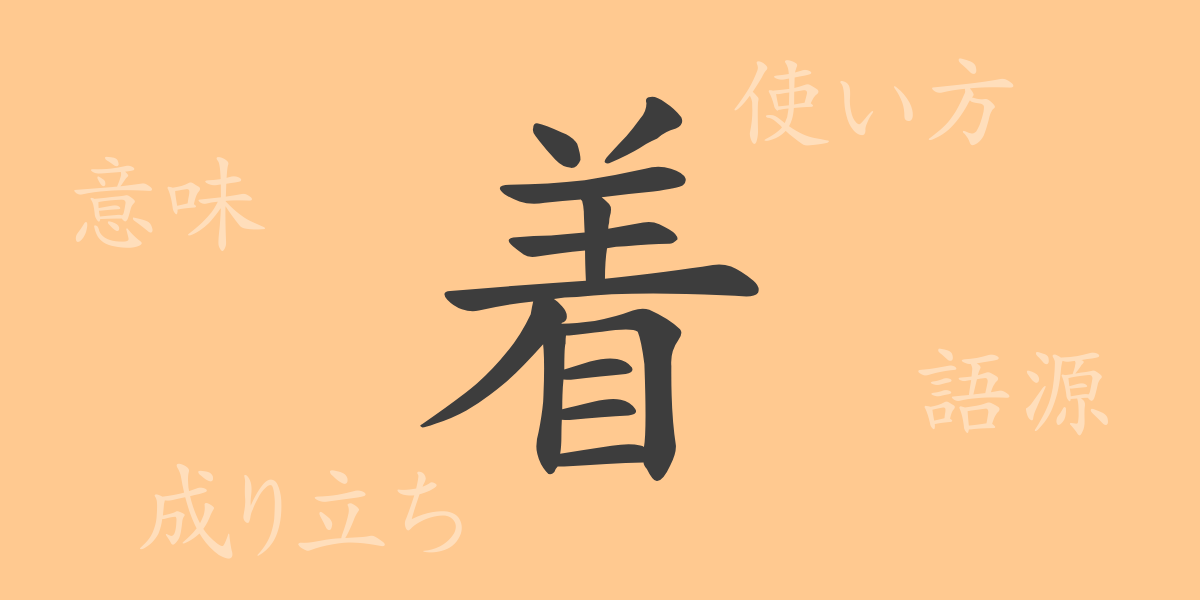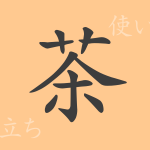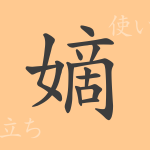The Kanji “着(ちゃく)” is deeply embedded in Japanese culture, symbolizing the depth and complexity of each character’s meaning and history. Frequently used in everyday life, “着” has a broad range of applications. This article delves into the etymology of “着,” its contemporary uses, and its presence in idioms and proverbs, enriching our understanding of this character’s diverse aspects.
Origins of “着(ちゃく)”
The Kanji “着” originated as a symbolic representation of putting on clothes in ancient China. It evolved from a pictograph depicting the act of attaching, combining the “羊(ひつじへん)” radical, signifying clothes or outerwear, and “失,” implying loss or mistake, reflecting the action of dressing. Over time, its form and meanings have evolved, leading to the modern “着,” which encompasses a broader scope of attaching or arriving.
Meanings and Usage of “着(ちゃく)”
“着” encompasses meanings such as “to wear,” “to arrive,” and “to stick to.” It is used in various contexts, such as “着替える(きがえる)” for changing clothes, “着陸(ちゃくりく)” for an airplane landing, and “着目(ちゃくもく)” for focusing on something.
Readings, Stroke Count, and Radical of “着(ちゃく)”
Understanding the readings and components of “着” enhances comprehension:
- Readings: On’yomi “チャク,” Kun’yomi “き, つ, きる, きせる, つく, つける.”
- Stroke Count: 12 strokes.
- Radical: 羊部(ひつじへん).
Phrases and Idioms Using “着(ちゃく)”
“着” appears in numerous idioms and phrases, reflecting its significance in Japanese language:
- “一着(いっちゃく)” – Finishing first in a competition.
- “着手(ちゃくしゅ)” – Starting something.
- “着実(ちゃくじつ)” – Steady and reliable.
- “着想(ちゃくそう)” – A notion or idea.
- “着火(ちゃっか)” – Ignition or lighting a fire.
- “着地点(ちゃくちてん)” – The point or outcome where things conclude.
- “着眼点(ちゃくがんてん)” – A point of focus.
- “着々(ちゃくちゃく)” – Steadily progressing.
- “見るは一時の恥、聞くは一時の恥、聞かぬは一生の恥” – A proverb emphasizing the importance of asking questions and not remaining ignorant.
Conclusion on “着(ちゃく)”
The Kanji “着” illustrates the richness of the Japanese language, embodying actions and states integral to daily life. From dressing to starting something new, and achieving goals, “着” is a testament to the language’s expressive capacity. This exploration of “着” has hopefully provided a deeper understanding of its multifaceted nature and cultural significance, aiding in a more profound appreciation of Japanese linguistics.

























